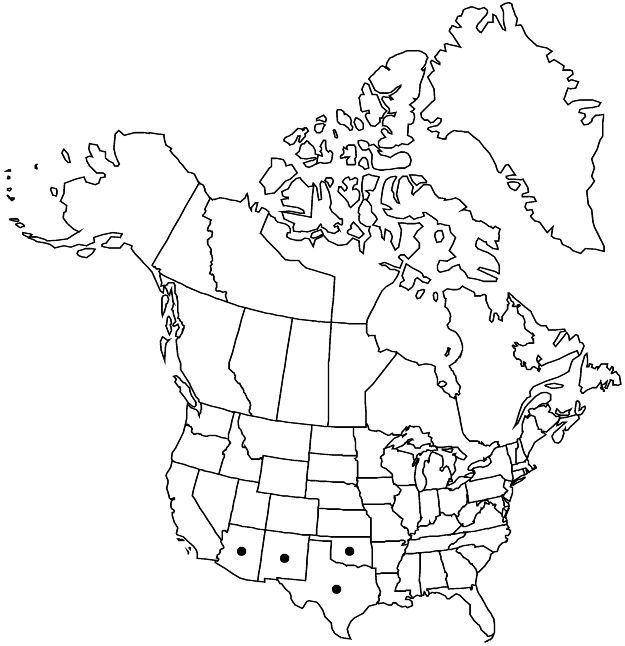Glossopetalon spinescens var. spinescens
Shrubs, (25–)50–300 cm. Branchlets ascending to divaricate, turning from grayish green to dull yellowish brown toward end of 2d year or later, usually glabrous, sometimes sparsely puberulent (around nodes). Leaves usually well developed at flowering and early deciduous, branches often appearing nearly leafless during much of growing season; stipules absent, persistent petiole bases usually becoming whitened with brown basal band, sometimes turning dark reddish purple to nearly black, ± expanded and thickened, glandular; largest blade 6–12 × 1.5–3 mm, margins glabrous or sparsely ciliolate proximally, glabrous. Petals 5–8 mm, mostly widest proximal to apex sometimes nearly oblong, apex acute or acuminate, tips usually sharply pointed. Stamens 6–10, in 1 equal or 2 unequal series.
Phenology: Flowering Apr–Sep.
Habitat: Rocky margins of washes, steep rocky hillsides, crevices and ledges of cliffs and outcrops, mostly on limestone substrate
Elevation: 1300–2300 m
Distribution

Ariz., N.Mex., Okla., Tex., Mexico (Chihuahua).
Discussion
Selected References
None.